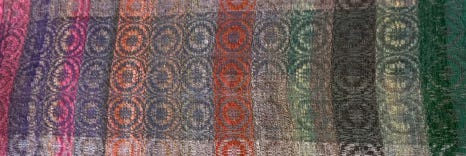
The last several projects I have undertaken have taken a familiar genesis. As I near the end of one project, I get an idea for another one. It becomes persistent. The nearer I am to closing the former, the more persistent and essential, or rather more imperative the next becomes. I am certain there is a psychological connection related to the desperateness of not having another project in the wings. What dire straits I would indeed be within if I find myself without a project in hand. The joke, is that I have several bins of projects waiting to be finished, a list of projects I want to try, but this one that becomes insistent next exists on neither of those avenues. It’s almost as if there is a petulant child that wants to have its turn, as if it never received its turn.
I have managed to retain some discipline thus far. I did create a project file, and have documented along the way.
One of the initial motivators was to weave a project that was handspun and dyed. It provides more control, theoretically, anyways. In actual practice, there is still a great deal of directional changes, and spontaneity and happenstance that alters the end result almost unrecognizable from the humble beginnings.
Another motivator was to create a soft blanket or coverlet with a circular twill pattern, something that has intrigued me for a while.
Lastly, I was hoping to make this almost exclusively from my stash.
So, how did this fare? Since the pattern required a taffy weft for every other pattern weft, half the weft was handspun. The other half was inspired by my stash of possum yarn. After doing a sample of the light dove gray in the stash, I realized that a much darker, or even black tabby weft would better contrast the colored handspun. I looked for a match to the possum blend and found the original seller, but thankfully they have replaced the ten percent of nylon in the original in my stash with silk, retaining the possum and merino wool proportions.
Wool fiber from my stash made up the handspun.
There was a beautiful light brown indeterminate wool roving that came to me in my early learning to spin years a couple of decades ago. The other was purchased more recently over the last decade whilst I was in festival mode, searching and adding to my stash regularly.
I determined and weighed out how much wool I would need for weft, and also measured and cut my warp thread.
Both the wool roving and warp threads were dyed using some leftover Dharmaset that had supposedly expired a year ago, but was ultimately still useable. All the stash fiber was hand-painted and dyed using this.
After that was done, I had left a large amount of pokeberry that decided to grow up in many of our flower beds. I collected and used this to overdye some of the warp and weft.
At the beginning of my fiber enthusiast expansion period, a time when I dove headlong into expanding into all aspects of fiber art including weaving, spinning, and dyeing, I had dyed several hanks of different wool threads with mullein and logwood. The logwood turned out a lovely blue purple, but the mullein, beautiful I am sure, was a bit too brown and yellow for my tastes. Three small hanks have lingered in my stash these past couple decades. I opted to throw that into the pokeberry bath.
An interesting accident occurred. I opted to mordant the mullein and logwood dyed fiber first. A lot of the logwood dye entered the mordant water, and I couldn’t believe how much dye came out of the fiber. Unfortunately, I didn’t think about taking a photo beforehand, just after the Pokeberry turned it a beautiful raspberry red. I take it back, I found a photo, just not very good resolution, because it’s buried in a larger photo of the section of stash it was buried within.
The piles of fiber were studied for contrast using the black and white photo technique. The goal was to have some gradient occurring in the color movement as the colors moved across a muted rainbow. The original design intent was to also have shading from dark to light move across the warp from one side to the other. The roving’s were bundled together into their designated skeins.
I spun a three-ply worsted choosing to spin each roving bundle at a time. Each single was spun, then the three singles plied. This was very fun and meditative to watch the color variations occur as each single built up on the spindle. Moving the singles through my fingers to ply onto a large bulky sized spindle was like weaving magic. My young feline friends learned for the first time to live alongside a spinning wheel. It was amazing how quickly they learned to leave it alone.
Once all of that was ready, I laid all the fiber warp and weft onto a table to arrange them. The warp was dyed purple to blue to green. the handspun ranged from raspberry to orange, brown, forest green, light greenish blue, to purple. It was a pleasant surprise, even though planned, to have the colors move from one end of the warp to the other aligning pleasantly. This too was accompanied by my fur friends and while on the table, very surprisingly, let me arrange and sley the reed without any mishap or playful mutterings.
The loom, however, was another matter entirely. Keeping the cats away required constant attention during the weaving process. I get it. There were these tantalizing squiggly wool worms constantly waving in their face. What respecting cat would resist? But that was really only in the beginning. This wasn’t their first rodeo with me at the loom with their company, but it had been a while so they needed to relearn what toys were theirs.
Weaving went fast. It was fun to watch the pattern build up. It was woven very loosely to allow for fulling it later into something wooly, light, and fluffy. In a little over a month, the blanket was woven.
I often dither about fringing and how to edge the product. I usually overcomplicate matters. This time, I opted to leave some of the warp as fringe, no twisting, just a nice simple hemmed stich using same color weft on each end, raspberry at the beginning, and green at the end.
Oh, yes, I should mention that the last two half segments at the end, a beautiful darker green, were especially dyed to coordinate and contrast with the beginning weft which featured a soft and fluffy boucle. Another step in this project had to be added. The end had to be dyed to order! I say this tongue-in-cheek because I love a multi-step project like this.
Fulling was done by agitating gently by hand in lukewarm water until the fiber was locked into place. Then I put it into a dryer at cool temperature checking every few minutes until the blanket was nicely fulled. It finished by air drying on top of that large flat space made by the tops of the front load side-by-side washer and dryer.
The end result was exactly as anticipated. It is luxuriously soft and has that velvet soft feel like wool with a little lanolin. Perfect to take the chill off.
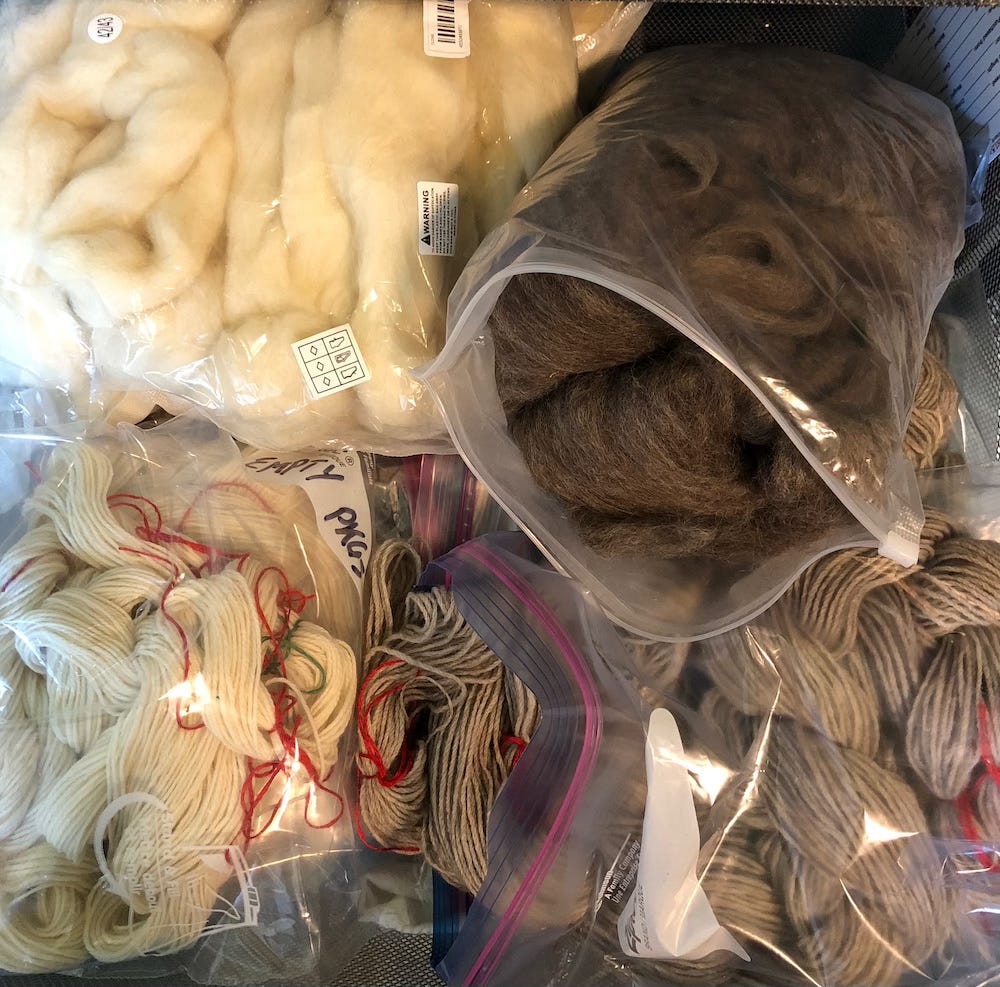
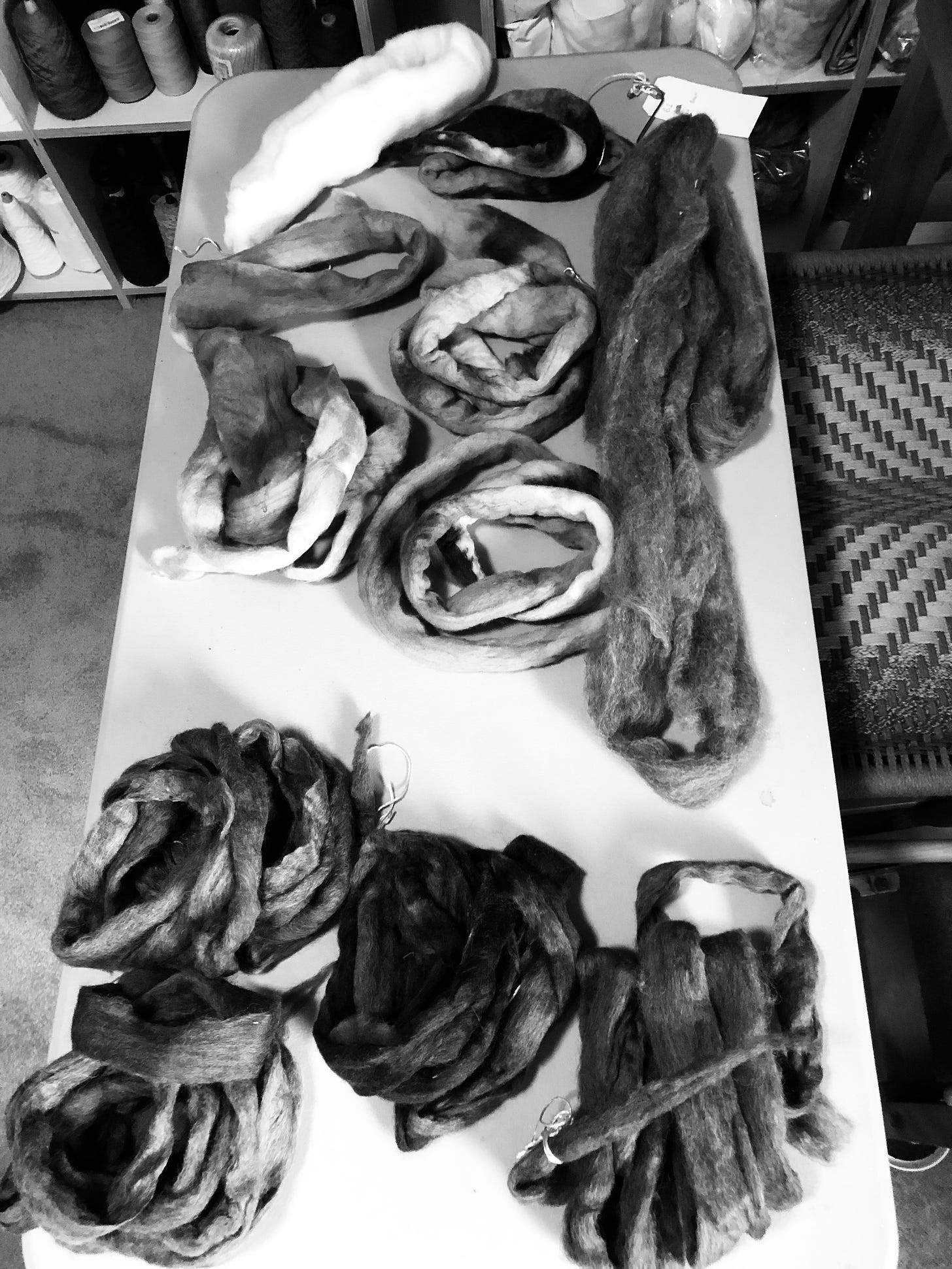
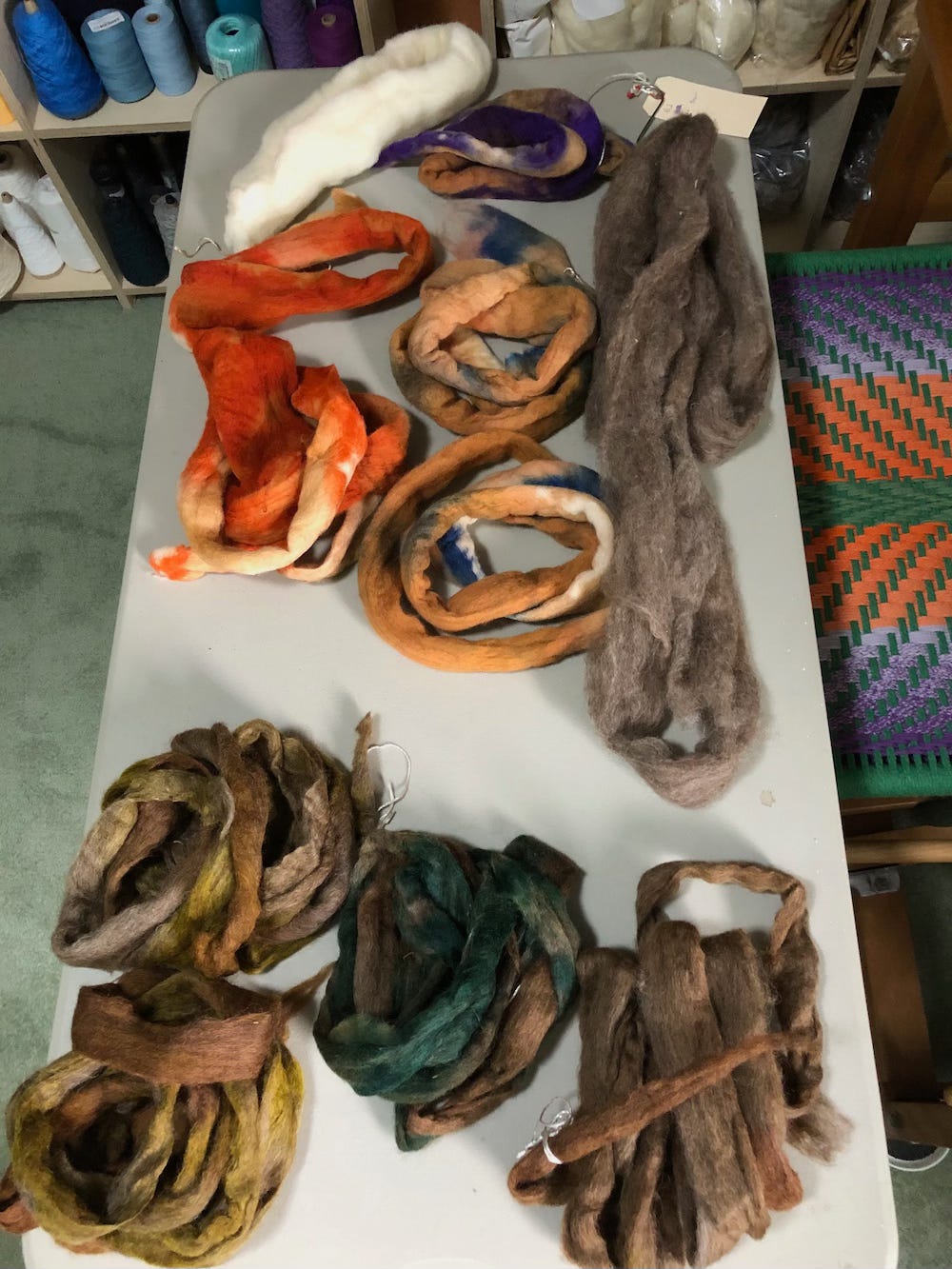
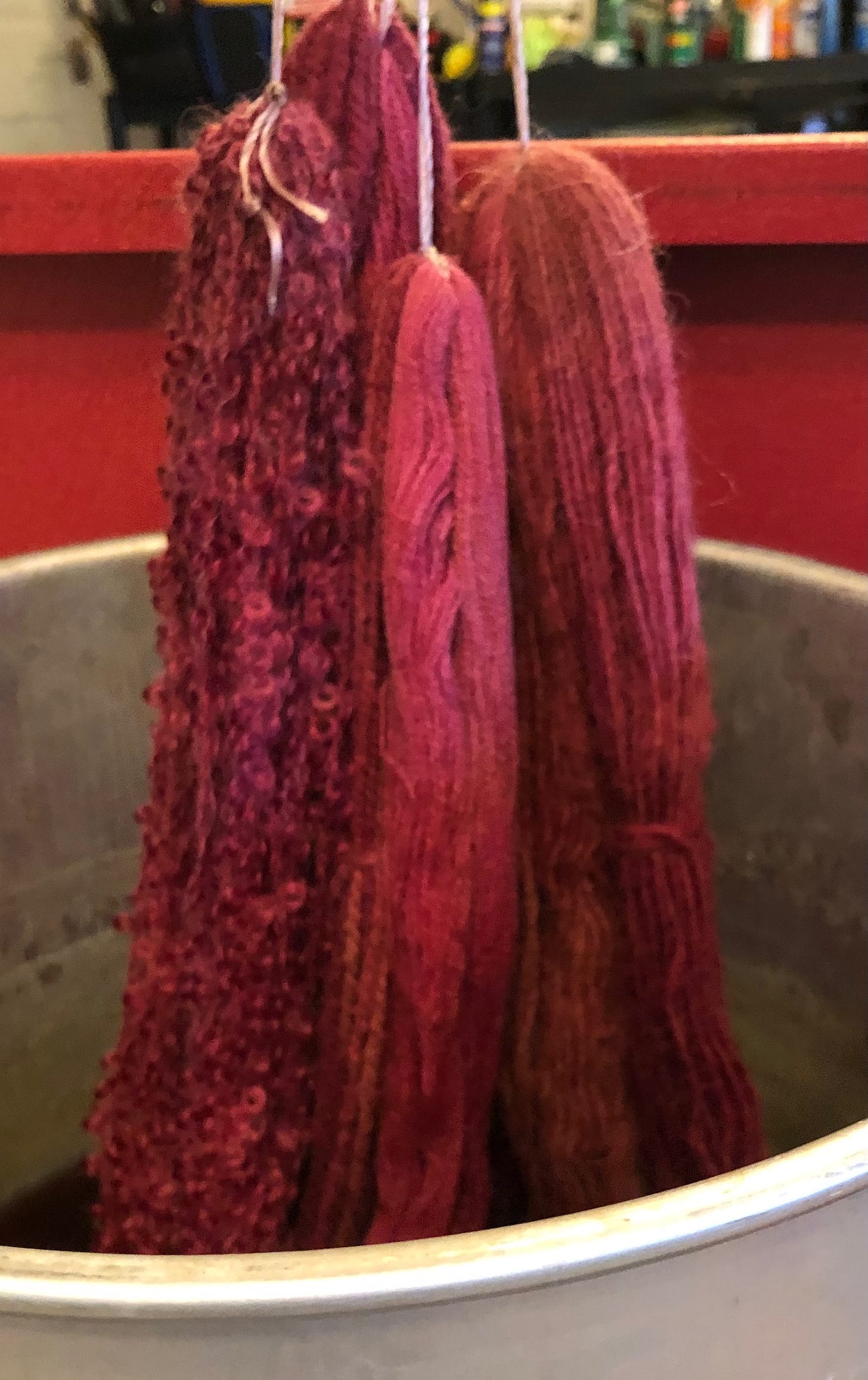
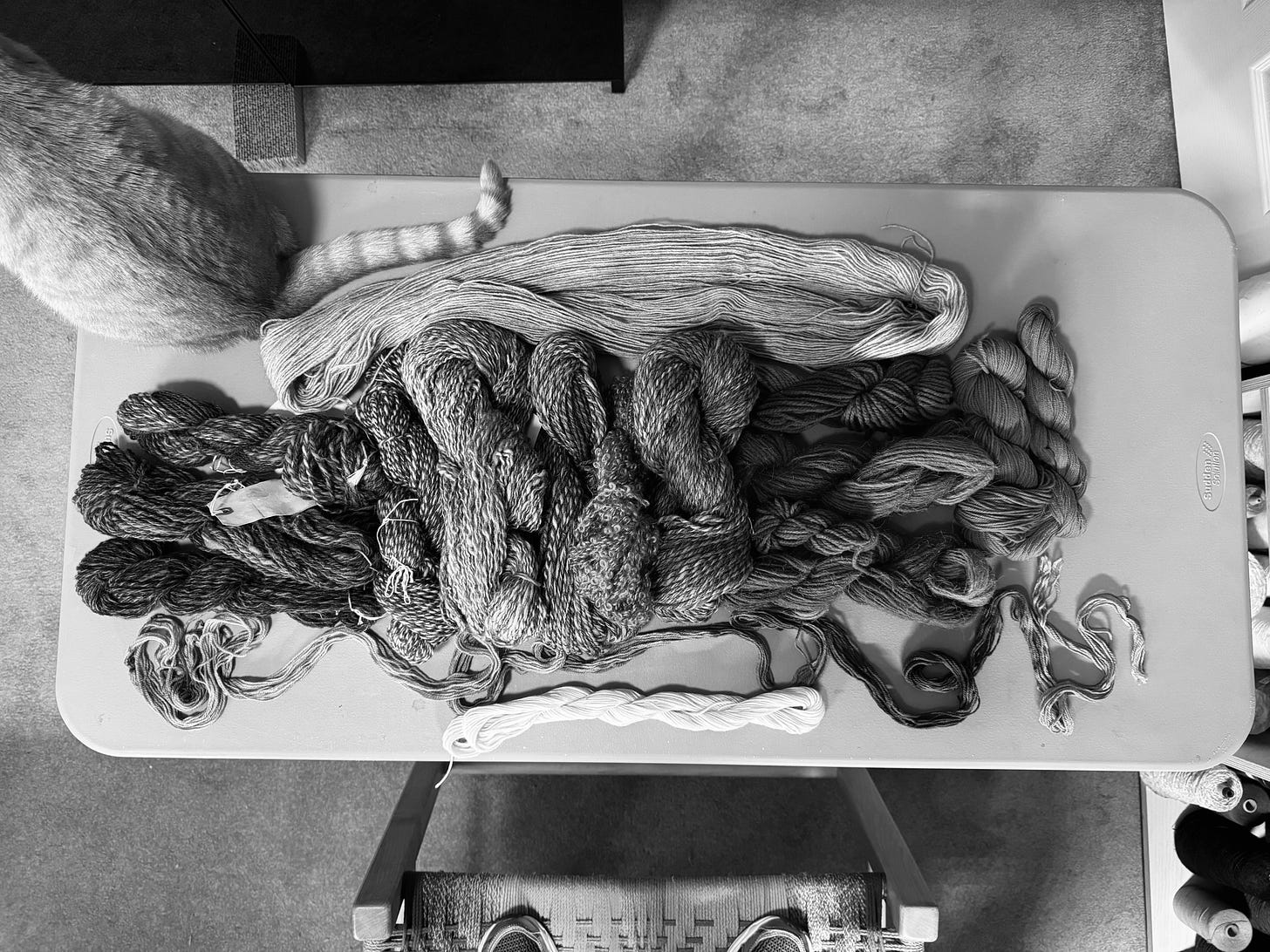


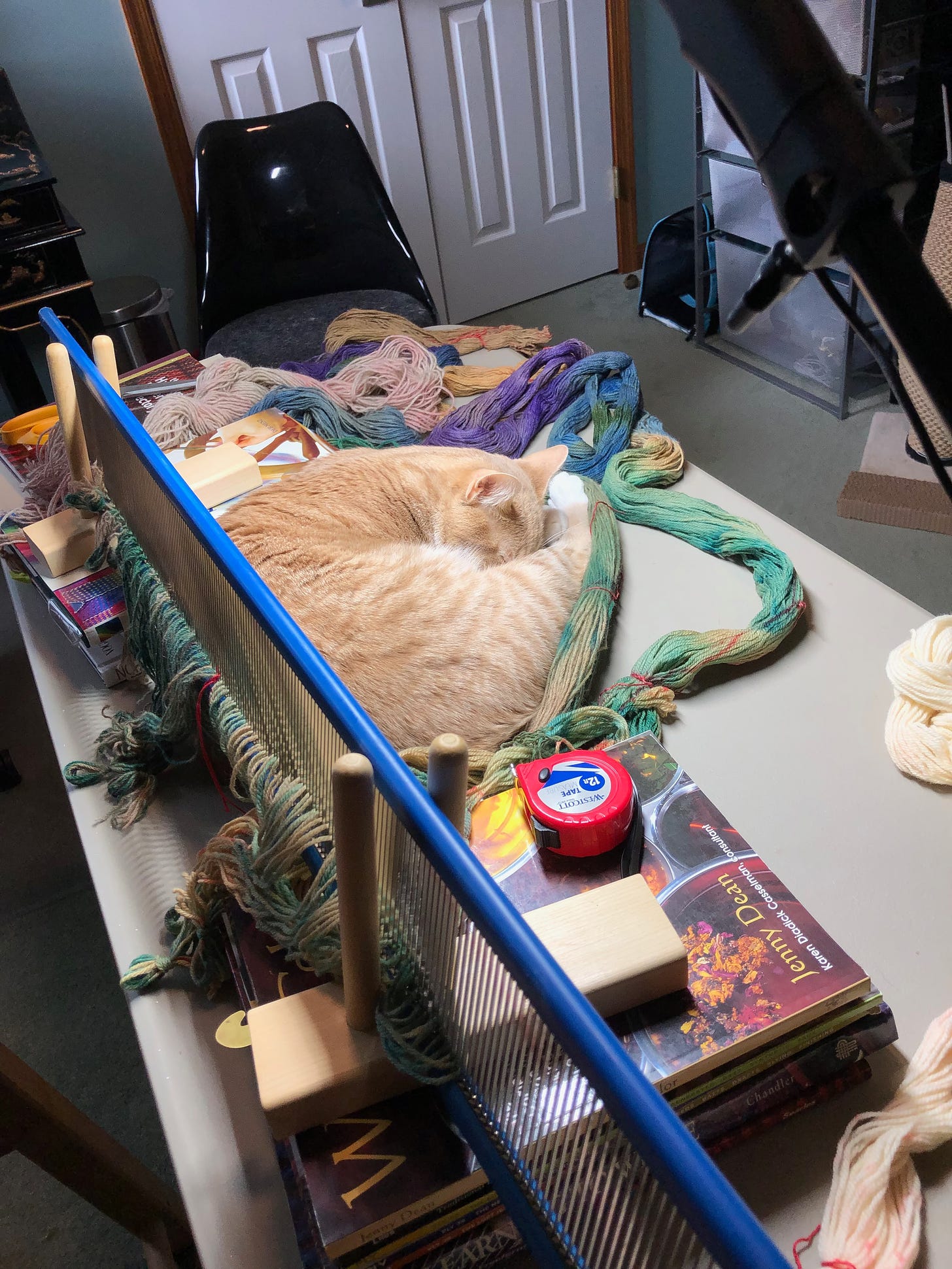
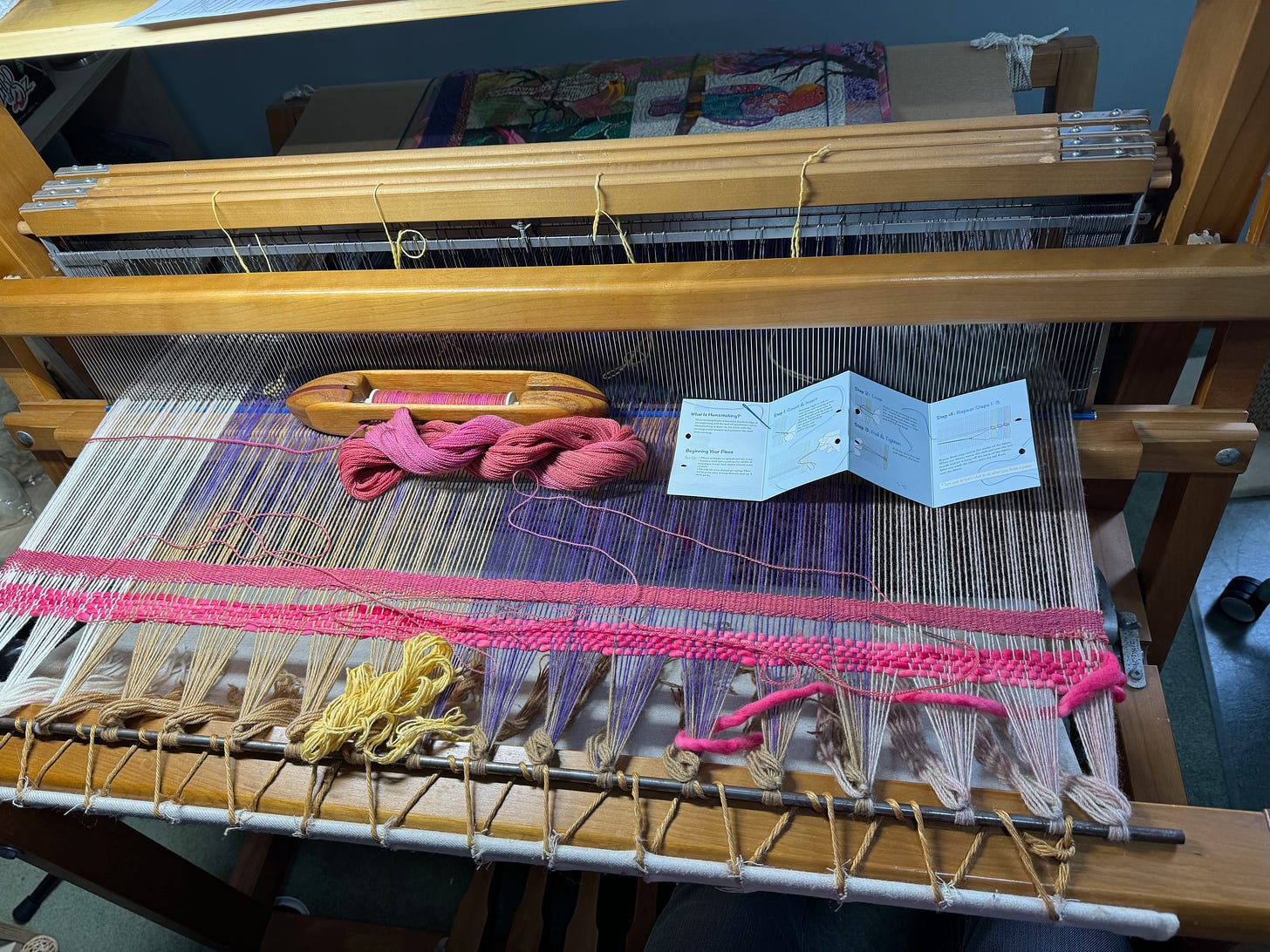
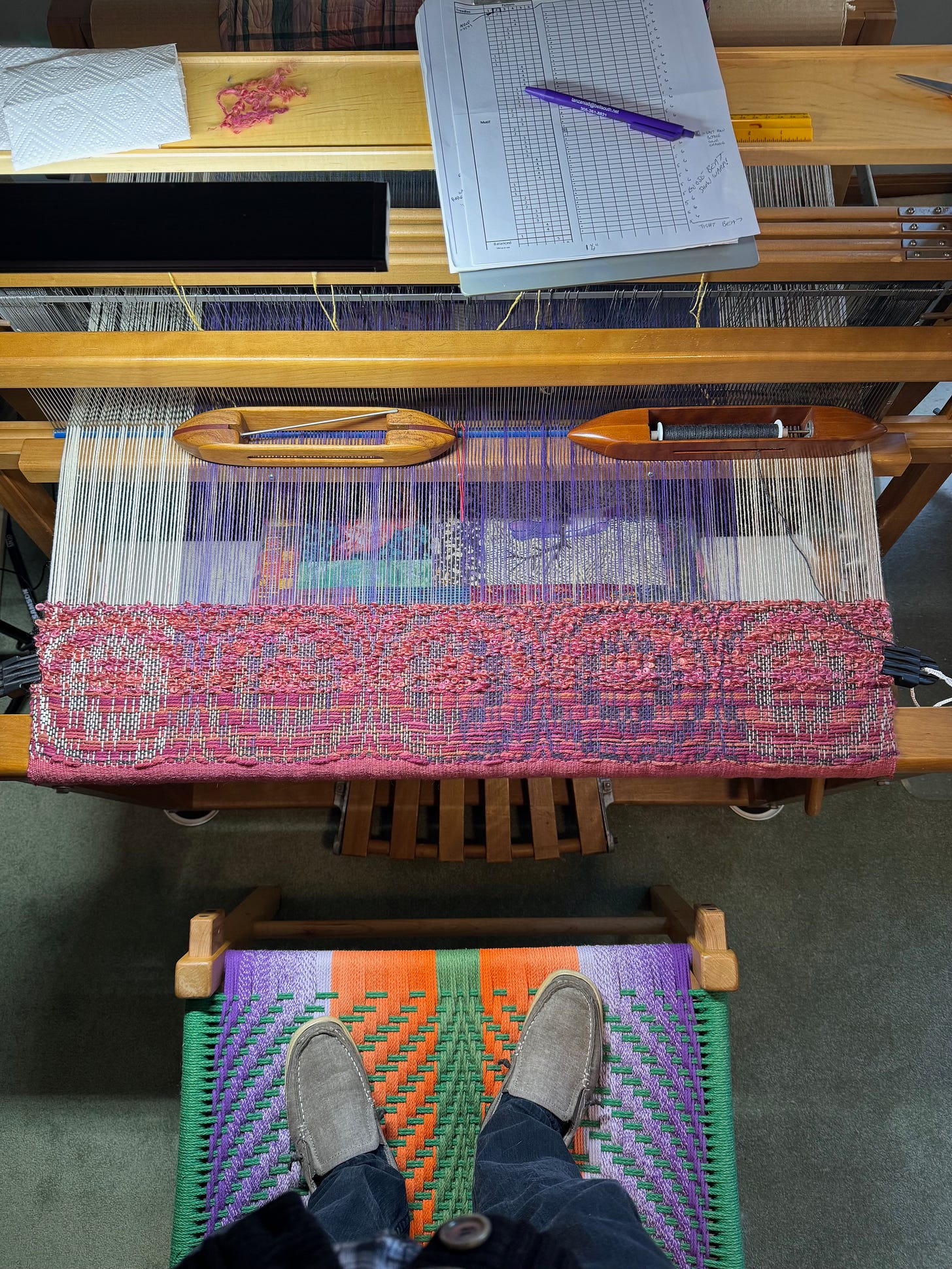
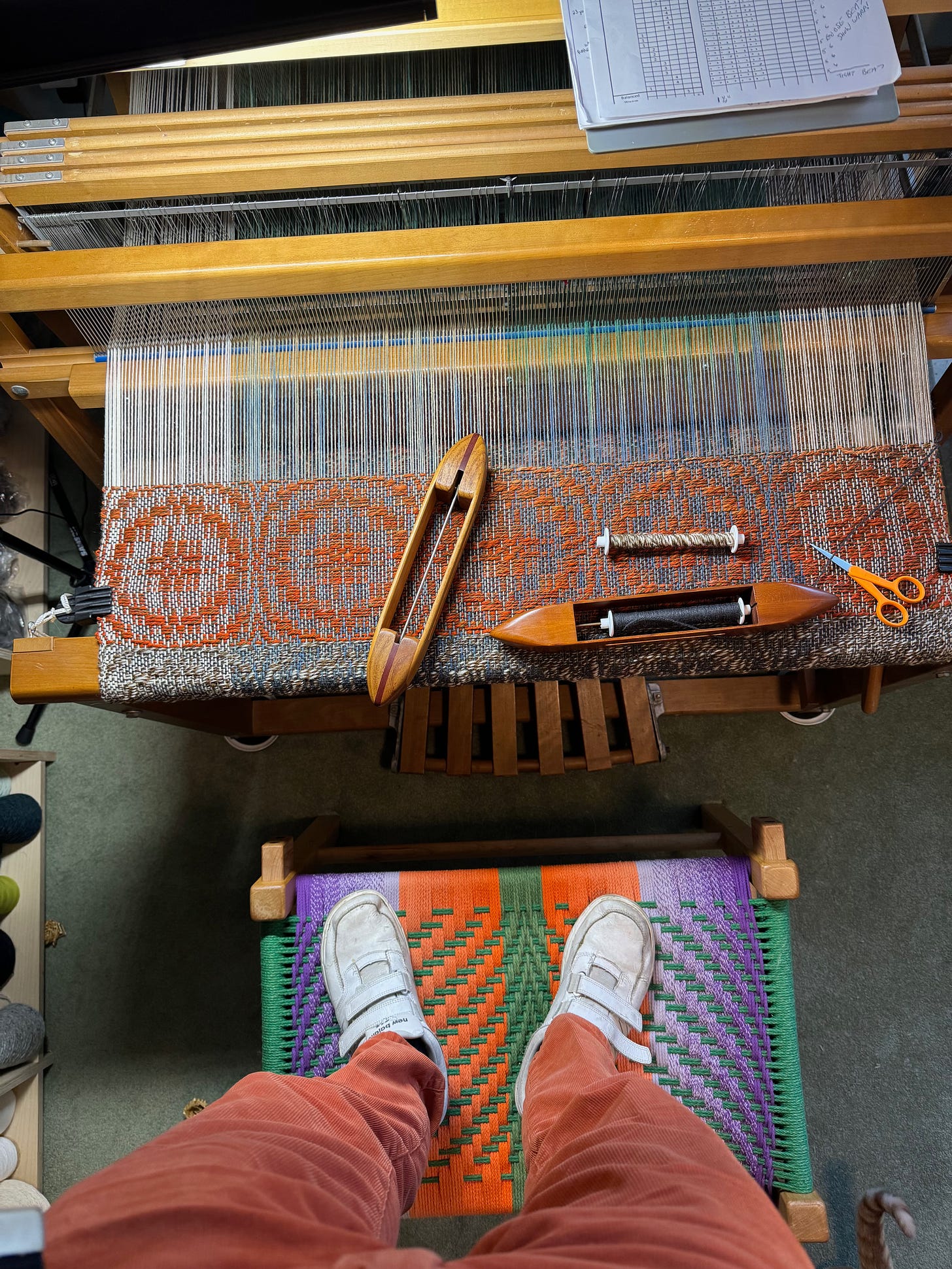
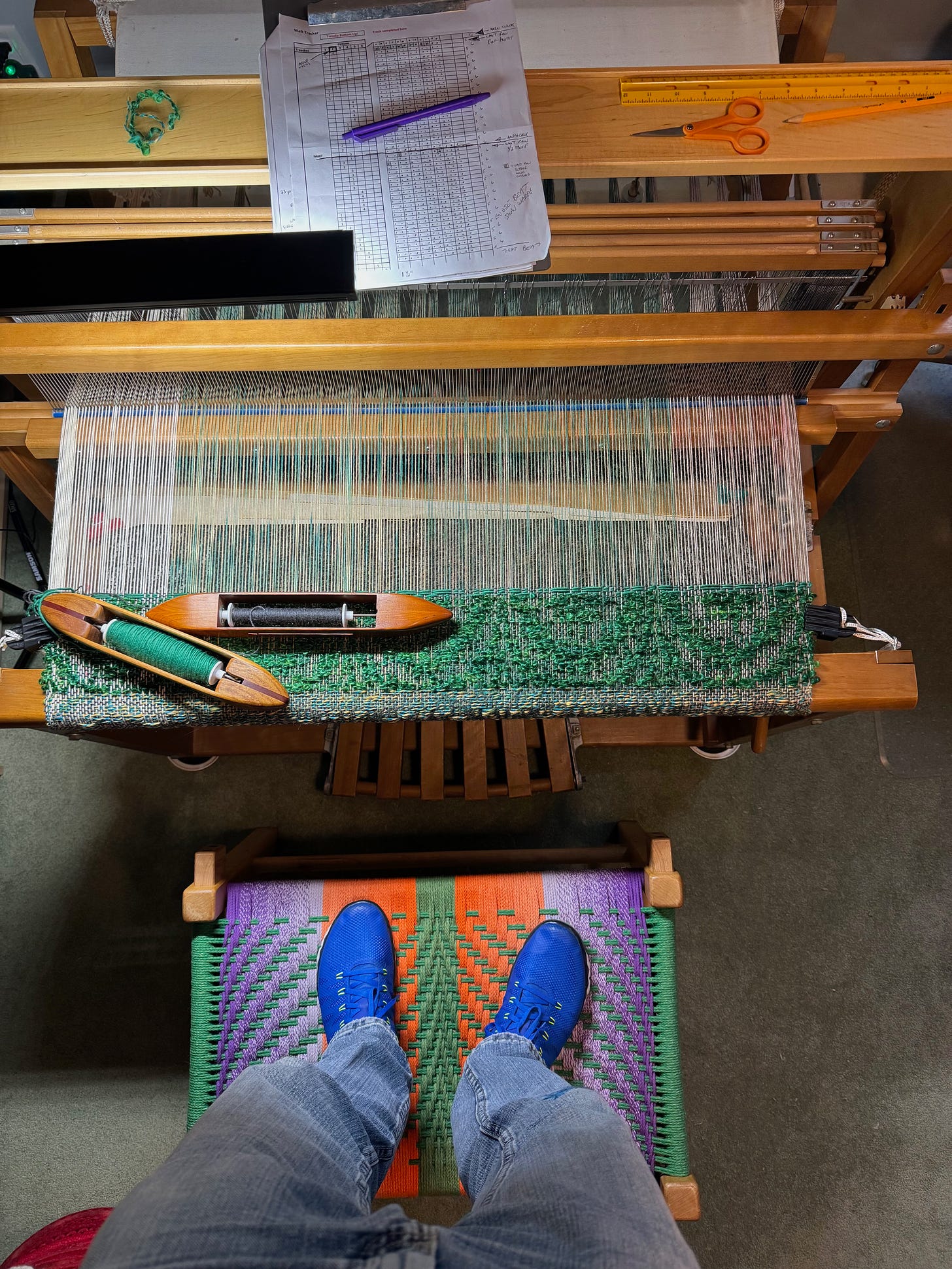
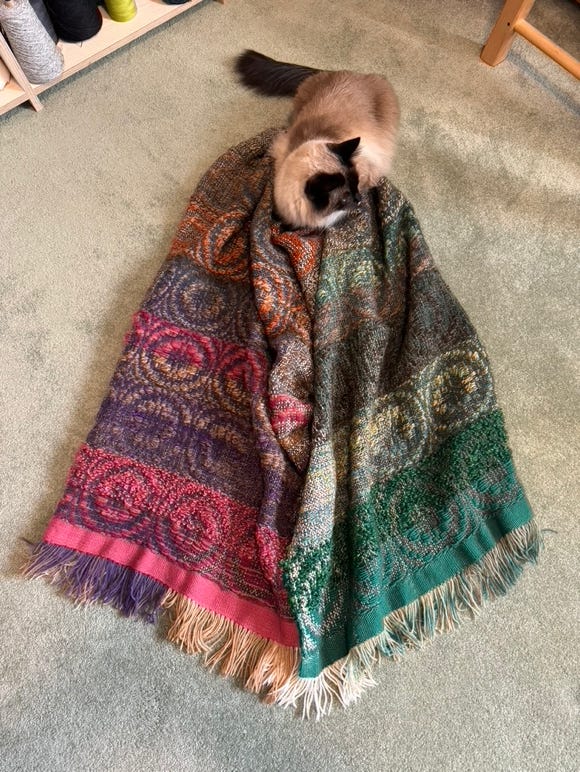
No comments:
Post a Comment